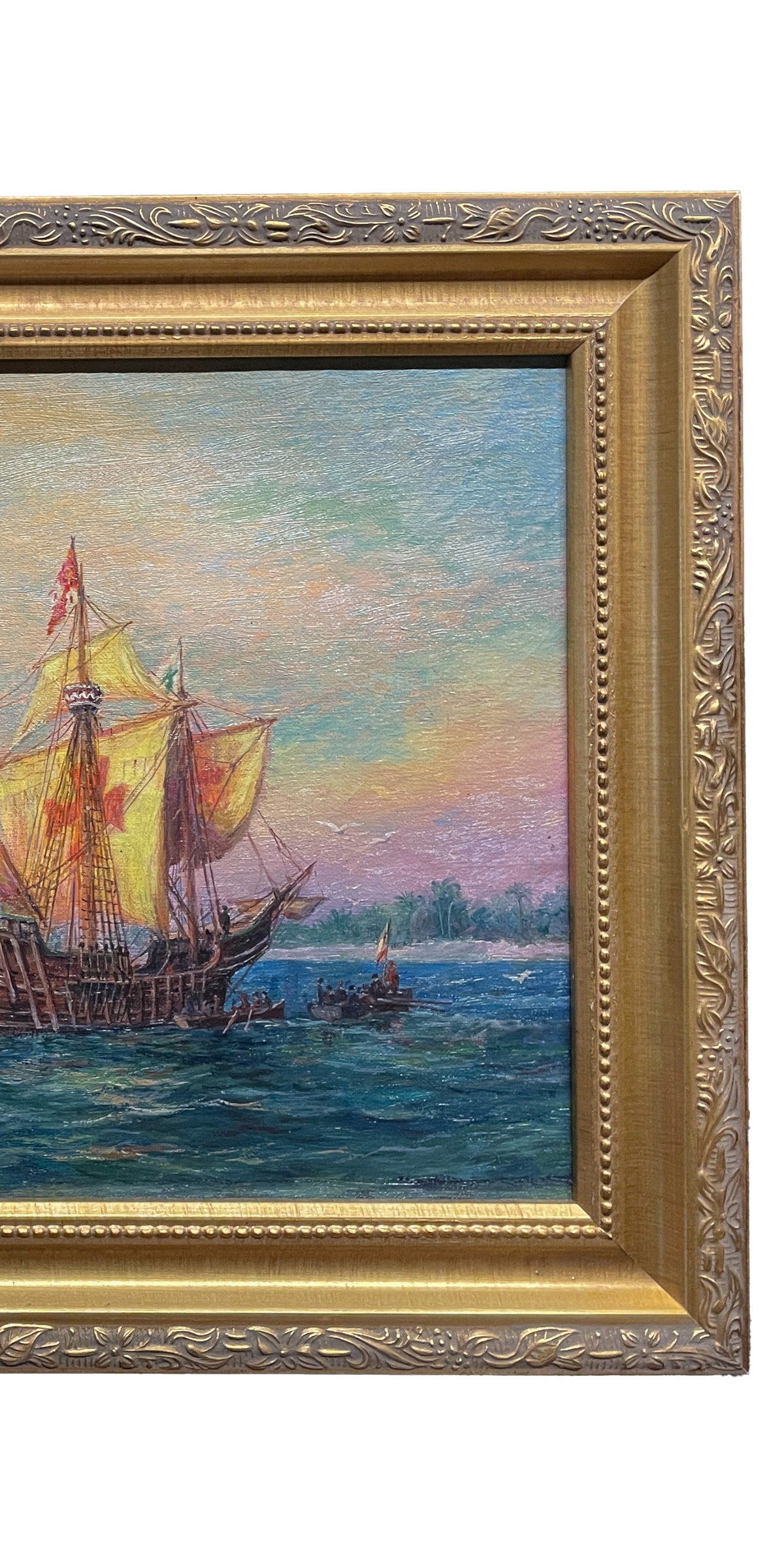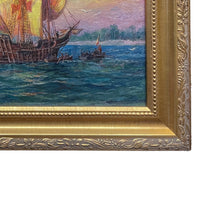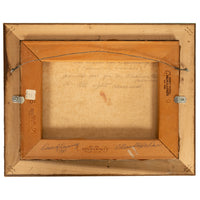Antique American Nautical Ships Oil Painting "The Discovery" Jamestown Virginia by William Steeple Davis 1921
- Regular
- $ 0
- Sale
- $ 0
- Regular
- Unit Price
- per
SOLD
An exceptional antique oil on canvas painting by the Long Island artist William Steeple Davis (1884-1961), the painting depicts the ship "Discovery". Signed & dated 1921.
The ship Discovery was built in 1602, it was Captained by John Ratcliffe and was one of the three ships (along with the "Susan Constant" and "Godspeed") on the 1606–1607 voyage to the New World for the English Virginia Company of London. The journey resulted in the founding of Jamestown in the new Colony of Virginia.
This painting portrays the ship with it's two accompanying vessels launching row boats off the coast of Virginia. The painting is in excellent condition and is housed in a contemporary carved gilt frame, this fine antique painting is ready to hang on your wall.
The painting without the frame at sight 12" x 9".
William Steeple Davis was born on May 7, 1884, he lived his entire life in the small village of Orient, on the eastern tip of the north shore of Long Island. Like many Long Island artists, he used his rural surroundings to further his career as a painter, photographer, and commercial artist. His work has been compared to that of Whitney Hubbard, Irving R. Wiles and Fairfield Porter. But unlike his East End contemporaries, Davis was self-taught and socially isolated; he rarely left Orient and did not travel to Europe until late in life. Despite this, he frequently exhibited his works at both American and international venues, he wrote more than six hundred articles about photography for such magazines as The Camera and Photo Era, and he established a career as a commercial illustrator.
In Davis's earliest painting he delighted in depicting the sailing ships he saw on Long Island Sound. With no formal training and much persistence, he strove to define himself as an artist and tried to continue the tradition of marine and landscape painting developed by his 19th-century predecessors Thomas Birch, Thomas Cole and Winslow Homer. His 1912 work Winter Afternoon is a good example of a painter trying to hold on to 19th-century realism in an age when modernism and abstraction were becoming the dominant styles of American painting.
Davis's graphic works consist primarily of etchings, hand-colored prints and block prints that echo the subject matter of his paintings. His linoleum block prints Horse and Buggy Days (1936) and Ploughing Time (1936) reflect a simpler time when men depended upon the power of horses, not steam or gasoline power. His best known work, In Tumult (c. 1927), perhaps best expresses the artist as a talented draftsman and reflects his love and respect for the power of the ocean.
Davis is well known for his works and essays on photography for which Davis is best known. His first contact with photographic materials was in 1895 when a friend, Lucien C. Laudy, sent him a magic lantern and several dozen lantern slides. Within a few years, Davis began to publish articles in well-known photography journals, and in 1923 he published the book Practical Amateur Photography. Davis was interested in all aspects of photography -- artistic, technical, scientific and economic -- and by his death he had published more than 600 articles on the subject
Imperial
ches high × ches wide × ches deep
Metric
high × wide x deep
Displayed rates are for shipping in the Continental U.S. and Canada. For other locations, kindly contact us and we will provide the most competitive shipping price available. All shipments are professionally packed and shipped insured with full tracking capabilities. Customers are also welcome to collect their items from our warehouses or arrange their own shipping.
























